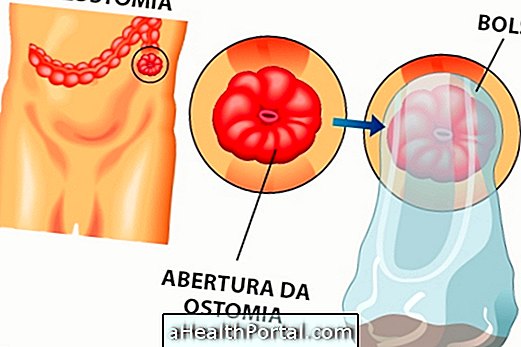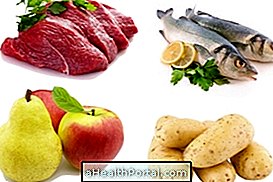Enteral nutrition is a type of food that allows the administration of all nutrients, or part of them, through the gastrointestinal system, when the person cannot consume a normal diet, either because it is necessary to eat more calories, or because there is a loss of nutrients, or because it is necessary to leave the digestive system at rest.
This type of nutrition is administered through a tube, known as a feeding tube, which can be placed from the nose, or from the mouth, to the stomach, or to the intestine. Its length and place where it is inserted varies according to the underlying disease, the general state of health, the estimated duration and the objective to be achieved.
Another less common way to administer enteral feeding is through an ostomy, in which a tube is placed directly from the skin to the stomach or intestine, being indicated when this type of feeding needs to be done for more than 4 weeks, as it happens in cases of people with advanced Alzheimer's.

What is it for
Enteral nutrition is used when it is necessary to administer more calories and these cannot be supplied by the usual diet, or when some disease does not allow the consumption of calories orally. However, the intestine must be functioning properly.
Thus, some situations where enteral nutrition can be administered are:
- Premature babies less than 24 weeks old;
- Respiratory distress syndrome;
- Malformations of the gastrointestinal tract;
- Head trauma;
- Short bowel syndrome;
- Acute pancreatitis in the recovery phase;
- Chronic diarrhea and inflammatory bowel disease;
- Burns or caustic esophagitis;
- Malabsorption syndrome;
- Severe malnutrition;
- Eating disorders, such as anorexia nervosa.
In addition, this type of nutrition can also be used as a form of transition between parenteral nutrition, which is placed directly in the vein, and oral feeding.
Types of enteral nutrition
There are several ways to administer enteral nutrition through the tube, which include:
This type of feeding can be administered with a syringe, known as a bolus, or through the force of gravity or an infusion pump. Ideally, it should be administered at least every 3 to 4 hours, but there are cases where feeding can be done continuously, with the help of an infusion pump. This type of pump mimics bowel movements, making feeding better tolerated, especially when the tube is inserted in the intestine.
How to feed a person with enteral nutrition
The food and the amount to be administered will depend on some factors, such as age, nutritional status, needs, disease and the functional capacity of the digestive system. However, it is normal to start feeding with a low volume of 20 mL per hour, which gradually increases.
Nutrients can be given through a crushed diet or through enteral formula:
1. Crushed diet

It consists of the administration of crushed and strained food through the probe. In this case, the nutritionist must calculate in detail the diet, as well as the volume of food and the time at which they should be administered. In this diet it is common to include vegetables, tubers, lean meats and fruits.
The nutritionist may also consider supplementing the diet with an enteral formula, to ensure a sufficient supply of all nutrients, preventing possible malnutrition.
Although it is closer to classic food, this type of nutrition has a higher risk of contamination by bacteria, which may end up limiting the absorption of some nutrients. In addition, as it consists of crushed foods, this diet also presents a greater risk of obstruction of the probe.
2. Enteral formulas

There are several ready-made formulas that can be used to suppress the needs of people on enteral nutrition, which include:
- Polymeric: formulas that contain all nutrients, including proteins, carbohydrates, fats, vitamins and minerals.
- Semi elementary, oligomeric or semi-hydrolyzed: these are formulas whose nutrients are pre-digested, being easier to absorb at the intestinal level;
- Elementary or hydrolyzed: they have all the simple nutrients in their composition, being very easy to absorb at the intestinal level.
- Modular: formulas that contain only one macronutrient such as protein, carbohydrates or fats. These formulas are used especially to increase the amount of a specific macronutrient.
In addition to these, there are also other special formulas whose composition is adapted to some chronic diseases such as diabetes, liver problems or kidney disorders.
Possible complications
During enteral nutrition, some complications can arise, from mechanical problems, such as tube obstruction, to infections, such as aspiration pneumonia, or gastric rupture, for example.
Metabolic complications or dehydration, vitamin and mineral deficits, increased blood sugar or electrolyte imbalance may also occur. In addition, there may also be cases of diarrhea, constipation, bloating, reflux, nausea or vomiting.
However, all these complications can be avoided if there is supervision and guidance from a doctor, as well as proper handling of the tube and feeding formulas.
When not to be used
Enteral nutrition is contraindicated for patients at high risk of bronchoaspiration, that is, the fluid from the tube may enter the lungs, which is more common in people who have difficulty swallowing or who suffer from severe reflux.
In addition, one should also avoid using enteral nutrition in people who are decompensated or unstable, who have chronic diarrhea, intestinal obstruction, frequent vomiting, gastric hemorrhage, necrotizing enterocolitis, acute pancreatitis or in cases where there is intestinal atresia. In all of these cases, the best option is usually the use of parenteral nutrition. See what this type of nutrition consists of.
Was this information helpful?
Yes No
Your opinion is important! Write here how we can improve our text:
Any questions? Click here to be answered.
Email in which you want to receive a reply:
Check the confirmation email we sent you.
Your name:
Reason for visit:
--- Choose your reason --- DiseaseLive betterHelp another personGain knowledge
Are you a health professional?
NoMedicalPharmaceuticalsNurseNutritionistBiomedicalPhysiotherapistBeauticianOther
Bibliography
- ÁLVAREZ María Luisa et al. Nutrition in pediatrics . 2nd. Caracas, Venezuela: Cania, 2009. 389-413.
- AMERICAN COLLEGE OF GASTROENTEROLOGY. Enteral and Parenteral Nutrition. Available in: . Accessed on 14 May 2019
- AMERICAN SOCIETY FOR PARENTERAL AND ENTERAL NUTRITION. What Is Enteral Nutrition. Available in: . Accessed on 14 May 2019



























